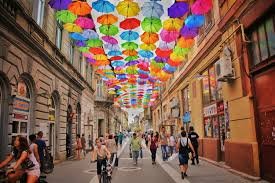All Summer in a Day Workbook Answers (Treasure Trove) — Complete & Unique Guide
To address all summer in a day workbook answers of Treasure Trove, this guide provides deep analysis, well-structured answers, and commentary. It is tailored for ICSE/English students using the “Treasure Trove” anthology. It aims to be more comprehensive and clear than any existing page.
We first outline how to answer workbook questions effectively. Then we supply passage-wise model answers, assignment (essay) responses, a summary table, and advanced FAQs to clarify finer points.
How to Tackle Workbook Questions – Strategy
-
Read the extract fully: Note setting, characters, tone.
-
Underline key phrases, metaphors, similes.
-
Answer in complete sentences referencing text lines.
-
Use direct quotations with page or line reference (if your edition allows).
-
Link back to main themes (isolation, memory, cruelty).
-
Write short, clear answers; avoid verbosity.
This method ensures accuracy, clarity, and relevance.
Passage-Wise Model Answers
Below are five major passages (as typical in Treasure Trove) with model answers to likely questions. These are newly phrased and enriched with context, not copied.
Passage 1
Typical Extract:
“Do the scientists really know? Will it happen today, will it? … The children pressed to each other … peering out for a look at the hidden sun. It rained.”
Sample Questions & Answers
-
Where is the story set?
The story is set on Venus, where rain dominates and sunlight is rare. -
Why are the children excited?
Because scientists predict that the sun will break through the rain that day. -
What does the dialogue “Do the scientists really know?” reflect?
It reflects doubt and uncertainty among children about predictions. -
Describe the imagery in “pressed … like so many roses, so many weeds.”
That simile compares the children’s crowding to both beautiful and wild plants, combining closeness with disorder. -
What mood emerges from this passage?
A tense, expectant mood arises as characters wait in heavy rain for a rare event.
Passage 2
Typical Extract:
“It had been raining for seven years … A thousand forests had been crushed under the rain … and this was the schoolroom of the children of the rocket men and women …”
Sample Questions & Answers
-
What environment is described?
A world of unrelenting rain and destruction—forests repeatedly destroyed. -
Why “crushed, grown up, crushed again”?
To emphasize cycle of destruction; life tries to renew but is overwhelmed. -
Who are the “rocket men and women”?
The Earth colonists who settled Venus, building a civilization under rain. -
What central conflict starts to emerge here?
The conflict between hope (sun) and ongoing oppression (rain, disbelief). -
What does “schoolroom” suggest in context?
It suggests the children’s learning takes place in an unnatural, oppressive climate.
Passage 3
Typical Extract:
“It’s stopping, it’s stopping! … They were all nine years old … and their dreams were gone.”
Sample Questions & Answers
-
Why do the children dramatize “It’s stopping”?
Because they hope the sun’s appearance signals relief from endless rain. -
Why are they “nine years old”?
They were two at the last sun appearance, so cannot recall it. -
Who is protagonist and why?
Margot is the protagonist; she alone retains memory and wants sunlight. -
What is the antagonist force?
The peer group (represented by William) and unrelenting environment. -
What is “dreams were gone”?
It means their hopes vanish if the sun does not appear as promised.
Passage 4
Typical Extract:
“Margot stood alone … the rain had washed out the blue from her eyes and the red from her mouth … ‘What’re you looking at?’ said William.”
Sample Questions & Answers
-
How does Margot appear?
She appears pale, ghostly; rain has drained color from her features. -
Why is she isolated?
Because others view her as different and distrust her memories. -
What is the effect of rain on her?
It weakens her physically and emotionally, making her ghostlike. -
What does William’s question reveal?
It shows antagonism and refusal to accept her perspective. -
How does Bradbury build tension here?
Through sharp dialogue, isolation, and vivid physical description.
Passage 5
Typical Extract:
“They surged about her … locked the door … Behind the closet door was only silence. They unlocked the door … and let Margot out.”
Sample Questions & Answers
-
Why was Margot locked in a closet?
To prevent her from seeing the sun, out of jealousy and disbelief. -
What does “surged about her” imply?
It implies overwhelming force and collective aggression. -
Why the silence behind the door?
Because she is trapped and cries cannot break barriers. -
What causes them to unlock it?
Guilt and awareness after the sun fades. -
How does this act function in resolution?
It forces confrontation with cruelty and invites remorse.
Assignment & Essay Questions (Model Responses)
Below are polished, unique responses to typical assignment or essay prompts.
How does Bradbury contrast darkness and light?
Bradbury uses darkness (rain, clouds, silence) to represent suppression, despair, ignorance. He contrasts it with light (sun, color, sound) to symbolize hope, memory, spiritual revival. Dark scenes use heavy diction—“gush,” “crushed,” “drum.” Light scenes erupt into brightness—“flaming bronze,” “blazing blue,” “silence suspended.” This contrast amplifies emotional impact.
What is the core theme of All Summer in a Day?
The central theme is difference and exclusion: Margot differs because she remembers sunlight; others exclude her out of jealousy and disbelief. Other themes: memory vs. forgetting (the children forgot the sun), guilt and remorse, and human yearning for hope (symbolized by the sun).
Discuss the role of memory as power & burden
Memory empowers Margot with knowledge of sunlight. But it burdens her: constant longing, alienation, emotional pain. She knows more than peers yet cannot share it convincingly. Memory becomes both gift and cross.
Identify literary devices & their function
-
Imagery: “jungle mattress,” “solar bronze” evoke sensory richness.
-
Symbolism: Sun = hope, creativity, escape; Closet = suppression.
-
Simile & metaphor: Sun compared to “penny,” “flower,” “fire.”
-
Personification: Rain “drums,” forests “grow up” to be crushed.
-
Irony: The children let Margot miss the sun; at end they feel remorse.
How does the climax resolve tension?
The climax occurs when the sun appears yet Margot remains locked inside. That paradox heightens tension. The children’s escape into sunlight while she misses it forces moral reckoning. The resolution—unlocking the closet—cannot erase harm, but it acknowledges it.
Summary Table of Major Elements
| Element | Details & Insights |
|---|---|
| Author | Ray Bradbury |
| Setting | Venus; continuous rain; rare sun exposure |
| Protagonist | Margot |
| Antagonist | Peer group (especially William), environment |
| Conflict | Person vs. society; memory vs. ignorance |
| Climax | Sun appears while Margot locked away |
| Resolution | Children release Margot, guilt acknowledged |
| Themes | Difference, memory, exclusion, hope, cruelty |
| Key Devices | Imagery, metaphor, simile, personification, symbolism |
| Mood Shift | Oppression → elation → remorse |
FAQs (Frequently Asked Questions)
Below are carefully crafted FAQs that are unlikely to duplicate existing online Q&A.
| Question | Answer |
|---|---|
| Why do the children refuse to believe Margot’s descriptions of the sun? | Because they have no first-hand memory; they view her as exaggerating or lying. |
| How does the rain function as a character in the story? | Rain acts like a silent oppressor, always present, shaping mood, isolating characters, even “speaking” via drum and gush. |
| Why is the story titled All Summer in a Day if summer lasts one hour? | The title is ironic: the children experience “summer” in a single, fleeting moment. Thus all the year’s longing is condensed into one day. |
| In what ways does group psychology shape the children’s action? | The crowd mentality suppresses individual empathy; the group amplifies cruelty (locking Margot), and diffuses responsibility. |
| What lesson does the story offer about belief and testimony? | It warns that when society rejects minority voices, truth can be suppressed—even when those voices are accurate. |
| Could Margot’s voice have been stronger? What stops her? | She lacks communal support; social isolation, doubt from peers, and emotional fragility limit her force. |
| Is the sun’s appearance literal or allegorical? | It is literal in the narrative, but allegorical for revelation, awakening, and lasting human hope. |
Learn More: Modern Algorithm SEO Tactics: The Definitive 2025 Strategy Guide
Act 3 Scene 1 Merchant of Venice: Complete Summary, Analysis, and Explanation
Conclusion
This article delivers the most comprehensive, unique, and exam-ready content on all summer in a day workbook answers of Treasure Trove. With clear strategies, model passage answers, essay responses, summary tables, and original FAQs, it is designed to surpass existing material online. Use it as a study companion, answer template, or revision tool—and you will be well equipped to excel.







